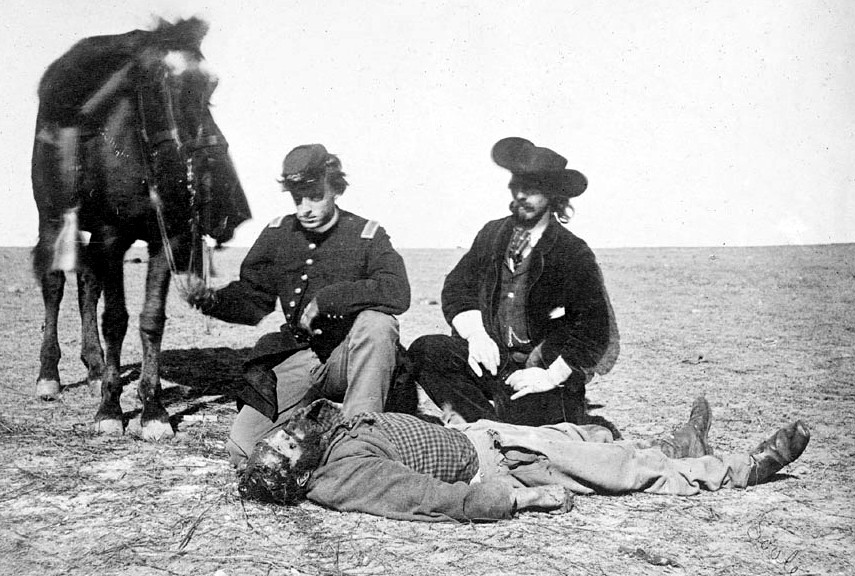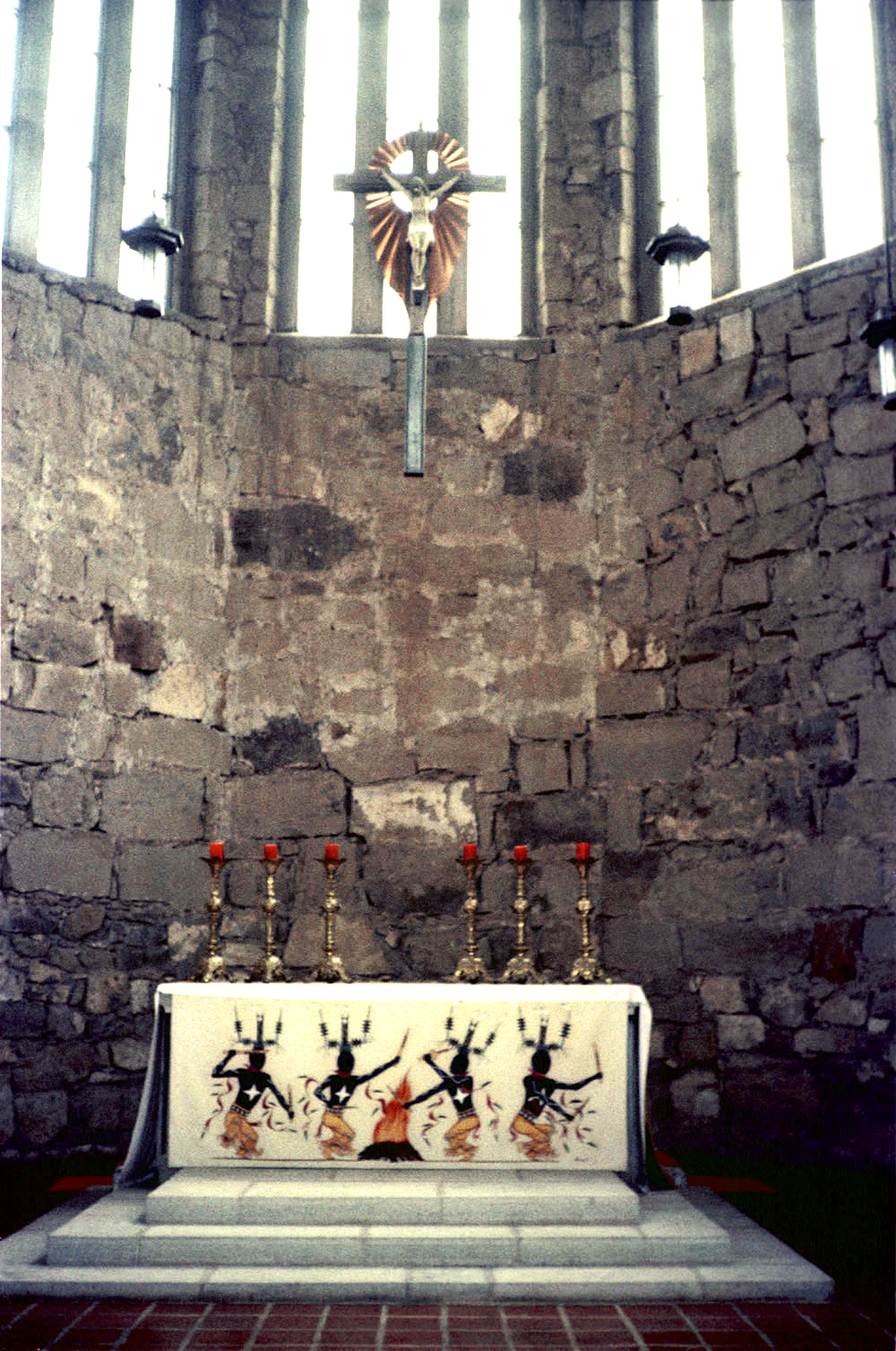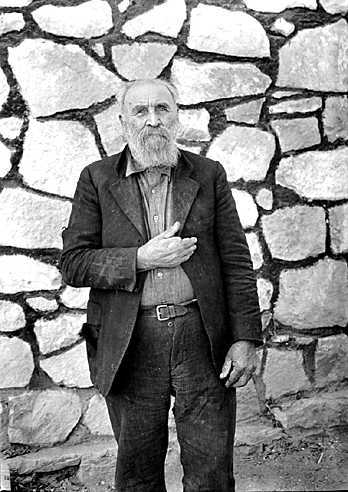|
List Of Old West Gunfights
This is a list of Old West gunfights. Gunfights have left a lasting impression on American frontier history; many were retold and embellished by dime novels and magazines like ''Harper's Weekly'' during the late 19th and early 20th century. The most notable shootouts took place in Arizona, California, New Mexico, Kansas, Oklahoma, and Texas. Some like the Gunfight at the O.K. Corral were the outcome of long-simmering feuds and rivalries but most were the result of a confrontation between outlaws and law enforcement. List * Bellevue War, April 1, 1840, Bellevue, Iowa Territory * Broderick–Terry duel, September 13, 1859, San Francisco, California * Wild Bill Hickok–Davis Tutt shootout, July 21, 1865, Springfield, Missouri * Gunfight at Hide Park, August 19, 1871, Newton, Kansas * Goingsnake massacre, April 15, 1872, Tahlequah, Indian Territory * Lampasas Gunfight, June 7, 1877, Lampasas, Texas * Battle of Blazer's Mill, April 4, 1878, Mescalero, New Mexico Territo ... [...More Info...] [...Related Items...] OR: [Wikipedia] [Google] [Baidu] |
American Frontier
The American frontier, also known as the Old West or the Wild West, encompasses the geography, history, folklore, and culture associated with the forward wave of American expansion in mainland North America that began with European colonial settlements in the early 17th century and ended with the admission of the last few western territories as states in 1912 (except Alaska, which was not admitted into the Union until 1959). This era of massive migration and settlement was particularly encouraged by President Thomas Jefferson following the Louisiana Purchase, giving rise to the expansionist attitude known as " Manifest Destiny" and the historians' " Frontier Thesis". The legends, historical events and folklore of the American frontier have embedded themselves into United States culture so much so that the Old West, and the Western genre of media specifically, has become one of the defining periods of American national identity. The archetypical Old West period is generall ... [...More Info...] [...Related Items...] OR: [Wikipedia] [Google] [Baidu] |
Springfield, Missouri
Springfield is the third largest city in the U.S. state of Missouri and the county seat of Greene County. The city's population was 169,176 at the 2020 census. It is the principal city of the Springfield metropolitan area, which had an estimated population of 481,483 in 2021 and includes the counties of Christian, Dallas, Greene, Polk, and Webster, and is the fastest growing metropolitan area in the state of Missouri. Springfield's nickname is "Queen City of the Ozarks" as well as "The 417" after the area code for the city. It is also known as the "Birthplace of Route 66". It is home to several universities and colleges, including Missouri State University, Drury University, and Evangel University. The city is an important center of education and medical care, with two of the largest hospitals in the area, CoxHealth and Mercy, employing over 20,000 people combined, and being the largest employers in the region. It has been called the "Buckle of the Bible Belt" due to it ... [...More Info...] [...Related Items...] OR: [Wikipedia] [Google] [Baidu] |
Dodge City, Kansas
Dodge City is the county seat of Ford County, Kansas, United States, named after nearby Fort Dodge. As of the 2020 census, the population of the city was 27,788. The city is famous in American culture for its history as a wild frontier town of the Old West. History The first settlement in the area that became Dodge City was Fort Mann, built by civilians in 1847. At that time the territory was part of Mexico, and the fort was built to provide protection for travelers on the Santa Fe Trail. Fort Mann collapsed in 1848 after an attack by Natives. In 1850, the U.S. Army arrived to provide protection in the region and constructed Fort Atkinson on the old Fort Mann site. The army abandoned Fort Atkinson in 1853. Military forces on the Santa Fe Trail were re-established farther north and east at Fort Larned in 1859, but the area remained vacant around what would become Dodge City until the end of the Civil War. In April, 1865, the American Frontier Wars in the West began he ... [...More Info...] [...Related Items...] OR: [Wikipedia] [Google] [Baidu] |
Long Branch Saloon Gunfight
The Long Branch Saloon gunfight, on April 5, 1879, was an altercation that took place between Frank Loving and Levi Richardson at the Long Branch Saloon in Dodge City, Kansas. Both men were gamblers who frequented the saloon. Background Frank Loving was a 19-year-old gambler at the time of the fight. Although often referred to as being a gunfighter, that reputation did not develop until after this event. Loving had come to Dodge City from Texas, and had arrived the year before. He had settled into the gambler's life of the busy cattle town, and gotten married. Loving became friends with Long Branch owner Chalkey Beeson, and become associated with several notable gunmen, gamblers and lawmen of the day, including Doc Holliday, Wyatt Earp, Bat Masterson, John Allen, as well as Levi Richardson. Levi Richardson had a tough disposition and was disliked by most, but did get along fairly well with Bat Masterson. He had a reputation as a gunman, despite it being mostly hearsay. In e ... [...More Info...] [...Related Items...] OR: [Wikipedia] [Google] [Baidu] |
Lincoln, New Mexico
Lincoln is an unincorporated village in Lincoln County, New Mexico, United States. Description The community sits in the Bonito Valley between the Sacramento Mountains and the Capitan Mountains at an elevation of 5,696 feet. The village is located approximately 57 miles (92 km) west of Roswell (by road) and just north of the Lincoln National Forest. Lincoln is the primary community in zip code 88338, which had a population of 189 residents in the 2010 census. The village is centered around a 1 mile stretch of U.S. Route 380 (also known as the Billy the Kid Trail), which is the village's only street. Numerous historic structures dating as far back as the late 1800s still remain, many of which have been preserved and now operate as public museums. Originally called La Placita del Rio Bonito (The Place by the Pretty River) by the Mexican families who settled it in the 1850s, the name of the community was changed to Lincoln when Lincoln County was created on January 16, ... [...More Info...] [...Related Items...] OR: [Wikipedia] [Google] [Baidu] |
Battle Of Lincoln, New Mexico
The Battle of Lincoln, New Mexico, was a five-day-long firefight between the Murphy-Dolan Faction and the Lincoln County Regulators, Regulators that took place between July 15–19, 1878, in Lincoln, New Mexico. It was the largest armed battle of the Lincoln County War in the New Mexico Territory. The firefight was interrupted and suppressed by United States Cavalry led by Lt. Col. Nathan Dudley from Fort Stanton. By September 1878, when Territorial Governor Lew Wallace was appointed by the president, many of the Lincoln County Regulators, Regulators and other fighters had returned to normal life, as many had left the area. Wallace tasked Lincoln County Sheriff Pat Garrett to reduce lawlessness in the region, and, within three years, he and his deputies had hunted down and killed Billy the Kid, William "Billy the Kid" Bonney and other figures who had continued to operate in the area. Background Armed conflict in the Lincoln County War began with the killing of John Tunstall on ... [...More Info...] [...Related Items...] OR: [Wikipedia] [Google] [Baidu] |
Mescalero, New Mexico
Mescalero ( apm, Mashgal) is a census-designated place (CDP) in Otero County, New Mexico, United States, located on the Mescalero Apache Reservation. The population was 1,338 at the 2010 census. History The settlement was originally called Blazer's Mill, the location of a famous gunfight during the Lincoln County War. Geography Mescalero is located at (33.157440, -105.780482). According to the United States Census Bureau, the CDP has a total area of 17.9 square miles (46.3 km2), all land. Demographics As of the census of 2010, there were 1,338 people, 404 households, and 283 families residing in the CDP. The population density was . There were 373 housing units at an average density of 20.9 per square mile (8.1/km2). The racial makeup of the CDP was 4.06% White, 0.16% African American, 90.59% Native American, 0.08% Asian, 0.08% Pacific Islander, 2.27% from other races, and 2.76% from two or more races. Hispanic or Latino of any race were 8.68% of the ... [...More Info...] [...Related Items...] OR: [Wikipedia] [Google] [Baidu] |
Gunfight Of Blazer's Mills
The Gunfight at Blazer's Mill (April 4, 1878) was a shootout between what were known as the Lincoln County Regulators and buffalo hunter Buckshot Roberts. The gunfight The Regulators, including Billy the Kid, Charlie Bowdre, and led by Richard "Dick" Brewer, were in the process of hunting down anyone believed to have been associated with the murder of John Tunstall, which had sparked the Lincoln County War. Roberts had been implicated in crimes associated with the "Murphy-Dolan" faction, but in reality it is believed he wanted nothing to do with the ongoing range war. Blazer's Mill was located on a hillside between Lincoln, New Mexico and Tularosa, and was owned by Dr. Joseph H. Blazer, a dentist. The area included a large two-story house, a large square office building, a sawmill, a grist mill, several one story adobe structures and houses, a post office, a general store, and a number of corrals and barns. Three days earlier, the Regulators had killed Sheriff Brady ... [...More Info...] [...Related Items...] OR: [Wikipedia] [Google] [Baidu] |
Lampasas, Texas
Lampasas ( ) is a city in Lampasas County, Texas, United States. Its population was 7,291 at the 2020 census. It is the seat of Lampasas County. Lampasas is part of the Killeen–Temple–Fort Hood metropolitan statistical area. History For his services in the Texas Revolution, John Burleson received of land and established a permanent settlement in the 1850s. The city was first named Burleson, but the name was gradually changed to Lampasas Springs because of the existence of seven mineral springs. When the county was created in 1856, the law specified "The county seat shall be same name as the county." The city of Lampasas was officially incorporated in 1883. Several theories attempt to explain how the name Lampasas came to be. The '' Texas Almanac'' states the word came from a Spanish word for "lilies" found in nearby streams. Another source states the word comes from the Spanish name ''Lampazos''. The name was given to the local river by the Spanish Aquayo Exp ... [...More Info...] [...Related Items...] OR: [Wikipedia] [Google] [Baidu] |
Horrell Brothers
The Horrell brothers, sometimes referred to as the lawless Horrell boys (''circa'' 1873–1878), were five brothers from the Horrell family of Lampasas County, Texas, who were outlaws of the Old West, and who committed numerous murders over a five-year period before four of the brothers were killed in different incidents. The brothers are probably best known for the Horrell-Higgins feud, although it resulted in relatively few deaths compared to other feuds. However, starting in 1873, the brothers went on an ethnically motivated killing spree during which they killed a Hispanic lawman and a white lawman in New Mexico, killed 11 other Hispanic men, and wounded one Hispanic woman. The brothers had previously killed five lawmen in Texas. Background The Horrell and Higgins families had both settled in the Lampasas County area several years before the American Civil War. By all accounts, the two families got along well for over a decade. However, by the early 1870s, the Horrell ... [...More Info...] [...Related Items...] OR: [Wikipedia] [Google] [Baidu] |
Tahlequah, Oklahoma
Tahlequah ( ; ''Cherokee'': ᏓᎵᏆ, ''daligwa'' ) is a city in Cherokee County, Oklahoma located at the foothills of the Ozark Mountains. It is part of the Green Country region of Oklahoma and was established as a capital of the 19th-century Cherokee Nation in 1839, as part of the new settlement in Indian Territory after the Cherokee Native Americans were forced west from the American Southeast on the Trail of Tears. The city's population was 15,753 at the 2010 census, an increase of 8.96 percent over the figure of 14,458 reported in 2000. The 2019 estimated population is 16,819. Tahlequah is the capital of the two federally recognized Cherokee tribes based in Oklahoma, the modern Cherokee Nation and the United Keetoowah Band of Cherokee Indians. Tahlequah is also the county seat of Cherokee County. The main campus of Northeastern State University is located in the city. History Background Tahlonteeskee was the first established governmental capital of any kind in w ... [...More Info...] [...Related Items...] OR: [Wikipedia] [Google] [Baidu] |




